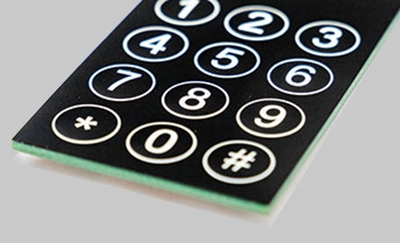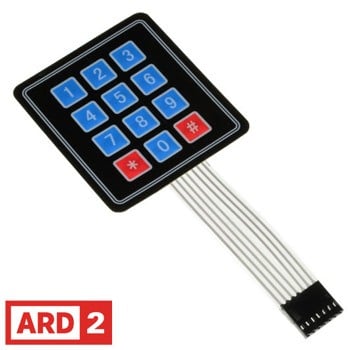Recognizing Membrane Layer Changes: The Key to Resilient and Reputable Controls
Membrane layer changes stand for an essential element of modern user interface style, mixing capability with resilience in different applications. As we explore the intricacies of membrane buttons, it comes to be clear that their function in boosting control systems is both complicated and profound, increasing concerns concerning how finest to utilize their capabilities in future technologies.
What Are Membrane Layer Buttons?
Membrane switches are an advanced option in the world of interface technology, combining performance and style flawlessly. These devices work as an interface between individuals and electronic systems, incorporating numerous elements right into a small style. Commonly created from adaptable, slim layers of products, membrane layer buttons are made to react to touch, enabling users to interact with machinery and digital tools properly.
The key components of a membrane layer button consist of a printed circuit layer, graphic overlay, and a spacer layer that avoids unintentional activation. The graphic overlay can be personalized to show brand name identification or customer choices, improving aesthetics while guaranteeing use. Membrane layer buttons are commonly made use of in different applications, including medical devices, consumer electronics, and industrial tools, owing to their durability and resistance to ecological variables such as dampness and dirt.
One of the essential advantages of membrane layer buttons is their capacity to stand up to deterioration, making them suitable for high-traffic atmospheres. In addition, they are lightweight and need minimal space, permitting cutting-edge styles in item development. In general, membrane changes stand for a reliable and useful selection for contemporary digital interfaces, weding innovation with user-centric layout principles.

Just How Membrane Layer Changes Work
The operation of membrane layer switches over rest on a basic yet efficient system that translates user input right into digital signals. These buttons contain several layers, generally including a graphic overlay, a spacer layer, and a circuit layer. When an individual presses the switch, the leading layer warps, allowing a conductive component in the circuit layer to reach a matching conductive pad on the bottom of the visuals overlay. This get in touch with shuts the circuit and sends out an electronic signal to the tool, suggesting that the button has been activated.
The style of membrane switches can differ, but they frequently incorporate domes or responsive aspects to supply feedback to the user, improving the general experience. The products used in membrane layer switches, such as polyester or polycarbonate, add to their durability and resistance to environmental aspects, including wetness and dirt. Moreover, the published circuits are usually enveloped, which safeguards them from damage over time.

Benefits of Membrane Buttons
One of the primary benefits of membrane buttons is their flexibility in layout, enabling them to be customized to fulfill particular customer needs and visual requirements. This flexibility prolongs to numerous markets, where various shapes, dimensions, and shades can be utilized to boost individual communication and visual allure.
Furthermore, membrane switches are known for their durability. Built from robust products, they are resistant to dirt, moisture, and physical wear, which considerably expands their lifespan compared to typical mechanical switches. This toughness makes them particularly appropriate for high-traffic settings and applications calling for longevity.

Additionally, membrane buttons provide a streamlined account, leading to a thinner layout that can be integrated right into different devices without including bulk. This feature not just enhances the visual appeal however also adds to a more ergonomic item design.

Applications of Membrane Buttons
Versatile and easy to use, membrane layer switches discover applications throughout a wide variety of sectors, including medical tools, customer electronics, and industrial tools. In the medical field, these buttons are important to devices such as diagnostic devices, person surveillance systems, and infusion pumps, where reliability and simplicity of cleansing are vital. Their ability to endure extreme atmospheres and maintain functionality makes them excellent for such applications.
In customer electronic devices, membrane layer buttons are made use of in items like microwaves, cleaning equipments, and remote controls - membrane switch. Their sleek layout permits for instinctive interface, boosting the total customer experience while supplying longevity and resistance to tear and put on
Commercial tools additionally takes advantage of membrane switches, particularly in control panels for machinery and automation systems. These switches offer defense versus dirt and wetness, making certain constant efficiency in tough settings. Moreover, their adjustable functions allow manufacturers to customize them to certain operational needs, boosting performance and performance.
Selecting the Right Membrane Layer Switch Over
When selecting a membrane layer switch, it is important to take into consideration different factors that affect performance and viability for particular applications. The primary factors to consider consist of ecological problems, responsive comments, toughness, and design specifications.
First, assess the operating environment; switches revealed to wetness, chemicals, or severe temperatures call for particular materials to make certain long life and capability. Next, evaluate the need for responsive comments. Depending on individual communication, some applications may gain from a why not check here tactile action to confirm activation, while others might prefer a non-tactile style for visual reasons.
Durability is an additional critical variable; membrane layer buttons must be designed to stand up to regular use, influences, and abrasion. Ensure the picked button can withstand the expected lifecycle, visit their website particularly in high-usage situations.
Verdict
To conclude, membrane switches act as necessary parts in the layout of reputable and long lasting control systems across numerous sectors. Their small style, integrated with robust building and adjustable features, enhances customer communication while making certain long life in requiring atmospheres. The flexibility of membrane switches enables customized options that satisfy particular operational demands, enhancing their value in modern-day technology. membrane switch. As industries remain to evolve, the significance of integrating efficient membrane switch services can not be overstated.
Membrane layer changes represent a crucial aspect of modern-day user interface style, blending functionality with strength in numerous applications.Membrane layer buttons are an innovative service in the realm of user interface innovation, combining capability and layout flawlessly. Typically created from versatile, thin layers of products, membrane switches are created to respond to touch, allowing customers to communicate with equipment and electronic tools efficiently.
The layout of membrane buttons can differ, however they typically integrate domes or tactile components to offer feedback to the customer, enhancing the total experience.In conclusion, membrane switches offer these details as crucial elements in the design of trusted and durable control systems throughout numerous industries.